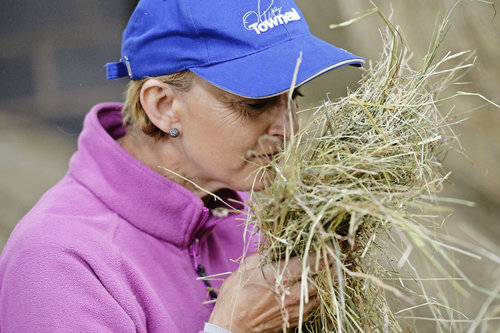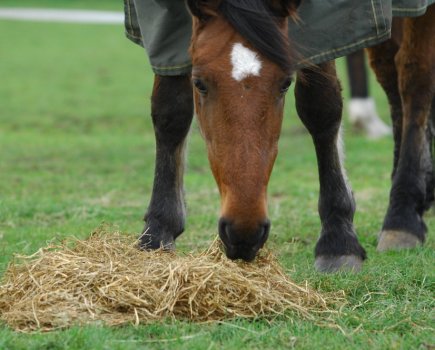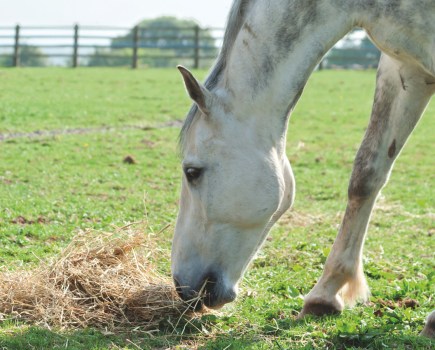Can you tell a good quality hay bale from a poor one — and would you know if your horse’s hay has gone off? Checking your horse’s forage is really important. The potential consequences to your horse’s gastrointestinal and respiratory health can be high if forage quality, especially its hygiene, is poor.
Changes in forage in a horse’s diet have a greater impact on gastrointestinal health than that of concentrate feeds, in particular the impact on the microbiota of the hindgut. So it’s important to know the content and quality of the forage you’re feeding your horse currently. When that’s running low, gradually introduce new forage over the course of at least three weeks.
Visual evaluation of hay is important, but it’s advisable to send a sample to a forage testing laboratory for a closer look as well.
How to tell if hay has gone off
On visual inspection, a good batch of hay will look green to light brown with clean stems and leaves. It will smell fresh, clean and hay-like!
Generally, feeding hay that’s about a year old is optimal, but if good hay is stored correctly (inside, so that it stays dry, and with good ventilation) its hygiene (moulds, fungi and bacteria) can remain good for years.
The nutritional value of hay will deteriorate with time, but for many horses and ponies this isn’t a problem. For example, in those equines where vitamins and mineral requirements are covered by concentrate or supplement feeding, and a nutritional value hay is not required due to the risk of laminitis, a high body condition score or similar.
The sniff test
Many horse owners smell their horse’s hay as a matter of course. If you don’t, it’s a good habit to get into — although this can be troublesome for hayfever sufferers.
Pull a good chunk of hay out of the bale — preferably from the inside — and give it a good sniff. Poor quality hay that has gone off will be dusty and have a mouldy, musty smell.
Bad quality hay can vary from being brown and sun bleached in colour, to obviously mouldy with dark or white areas of mould spores.
It’s advisable not to feed any hay from a mouldy bale. This is because fungal and mould spores can spread further into bale, even if you can’t see it.
When doing the sniff test to check hay quality, pull hay out to smell from several different places in the bale. It will give you a better overview of the whole bale.








